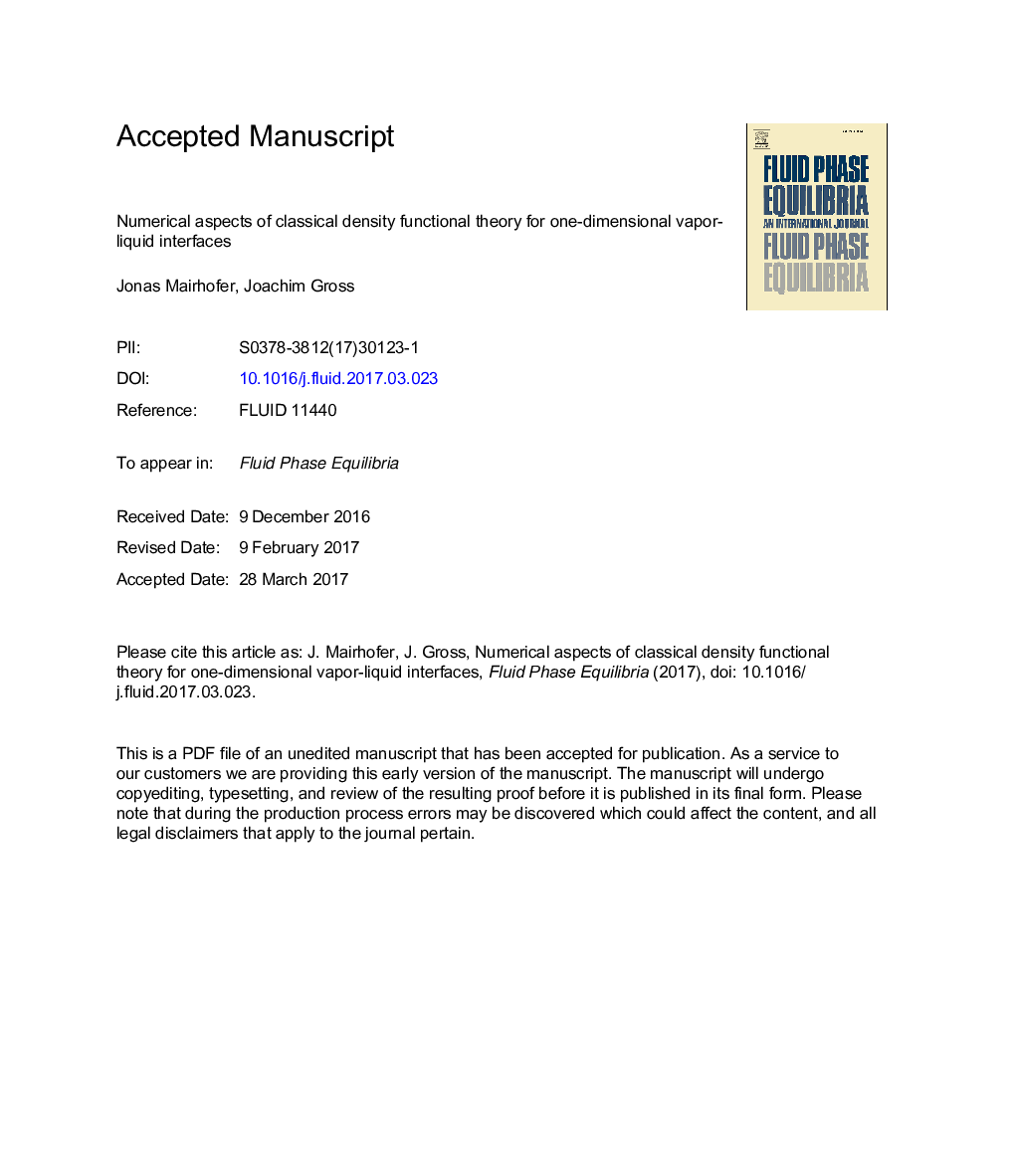| Article ID | Journal | Published Year | Pages | File Type |
|---|---|---|---|---|
| 4768015 | Fluid Phase Equilibria | 2017 | 28 Pages |
Abstract
This study compares different algorithms for solving the equations of classical density functional theory for the one-dimensional vapor-liquid interface of real fluids: Picard iteration, Anderson mixing, a restarted quasi Newton method and two versions of the matrix-free inexact Newton method, one using analytic the other using numerically approximated derivatives. All algorithms converge to the same density profiles in all studied test cases. The calculation time of the slowest algorithm (Picard iteration), however, is up to twenty times longer than for the fastest algorithms (Anderson mixing and inexact Newton method with numerically approximated derivatives). Further, the computational speed-up of parallelization and of a convergence criterion based on the value of surface tension instead of the decrease of the norm of the residual are discussed. A Helmholtz energy functional consistent with the perturbed-chain statistical associating fluid theory (PC-SAFT) is applied which includes contributions due to hard-sphere repulsion, chain formation, dispersion as well as association. For the association term, we compare two widely used functionals.
Related Topics
Physical Sciences and Engineering
Chemical Engineering
Chemical Engineering (General)
Authors
Jonas Mairhofer, Joachim Gross,
